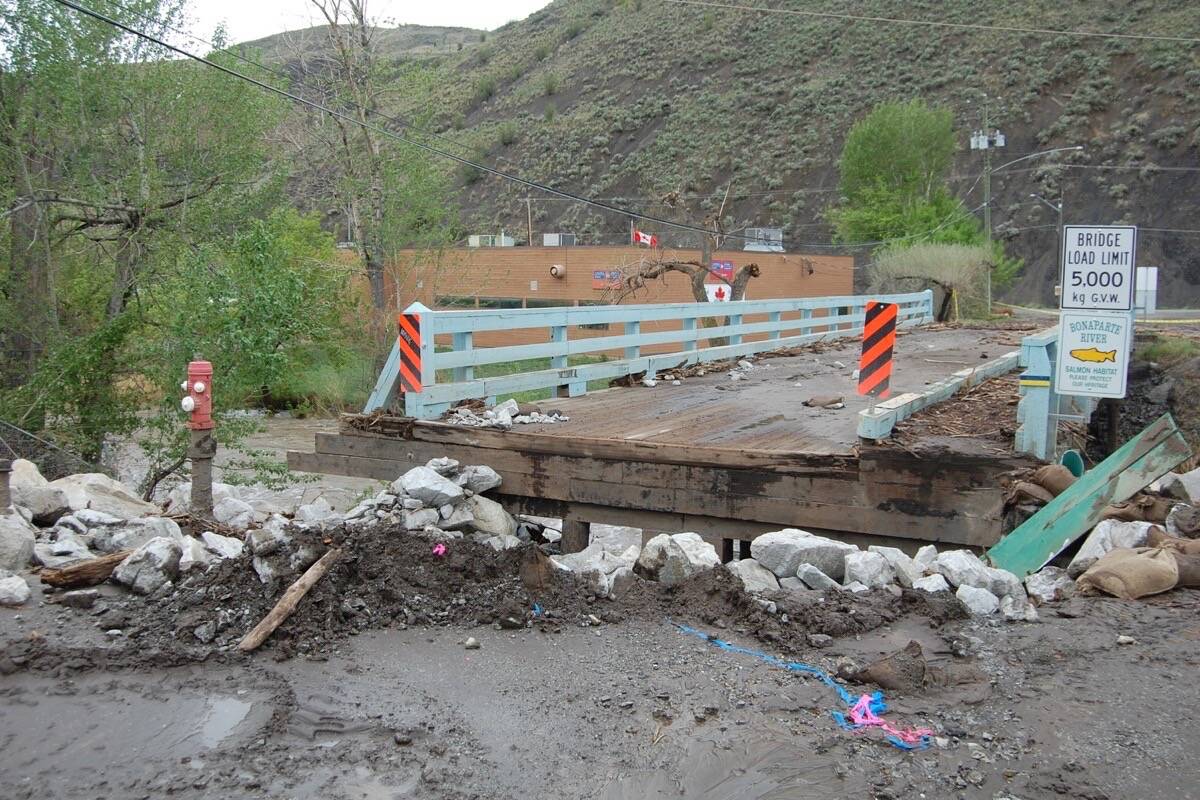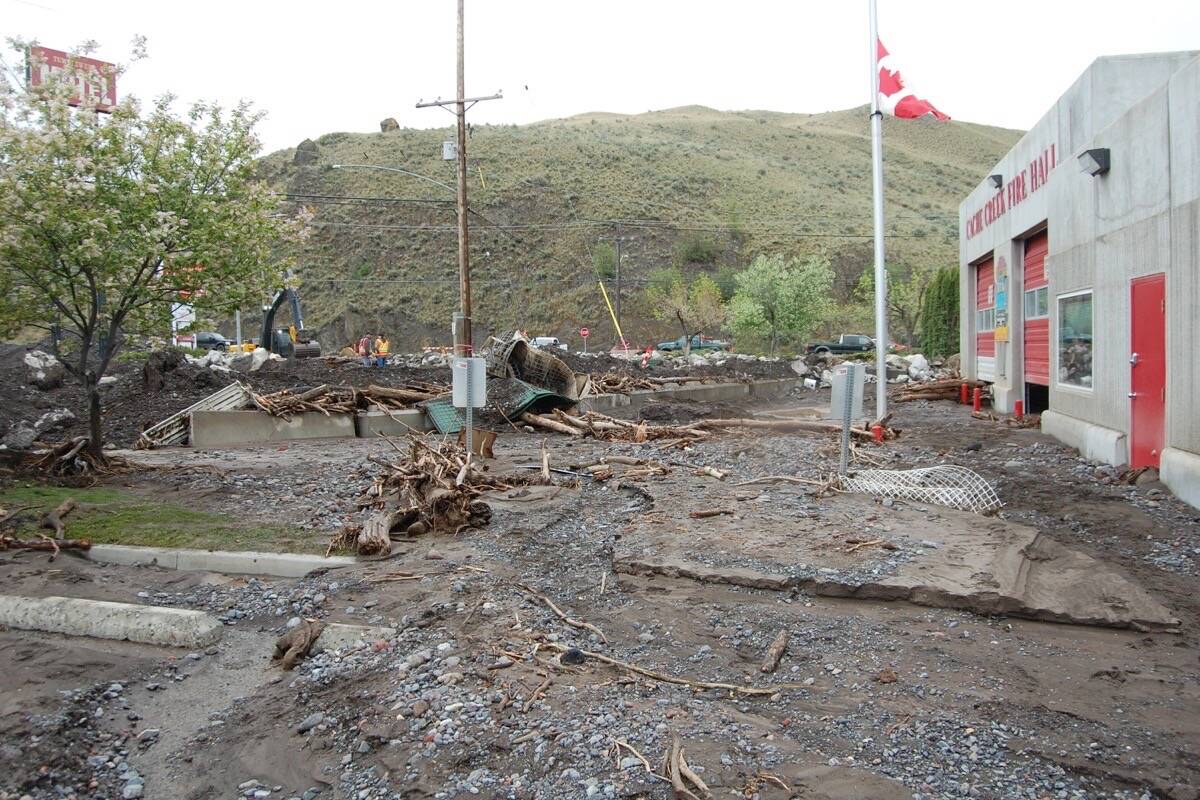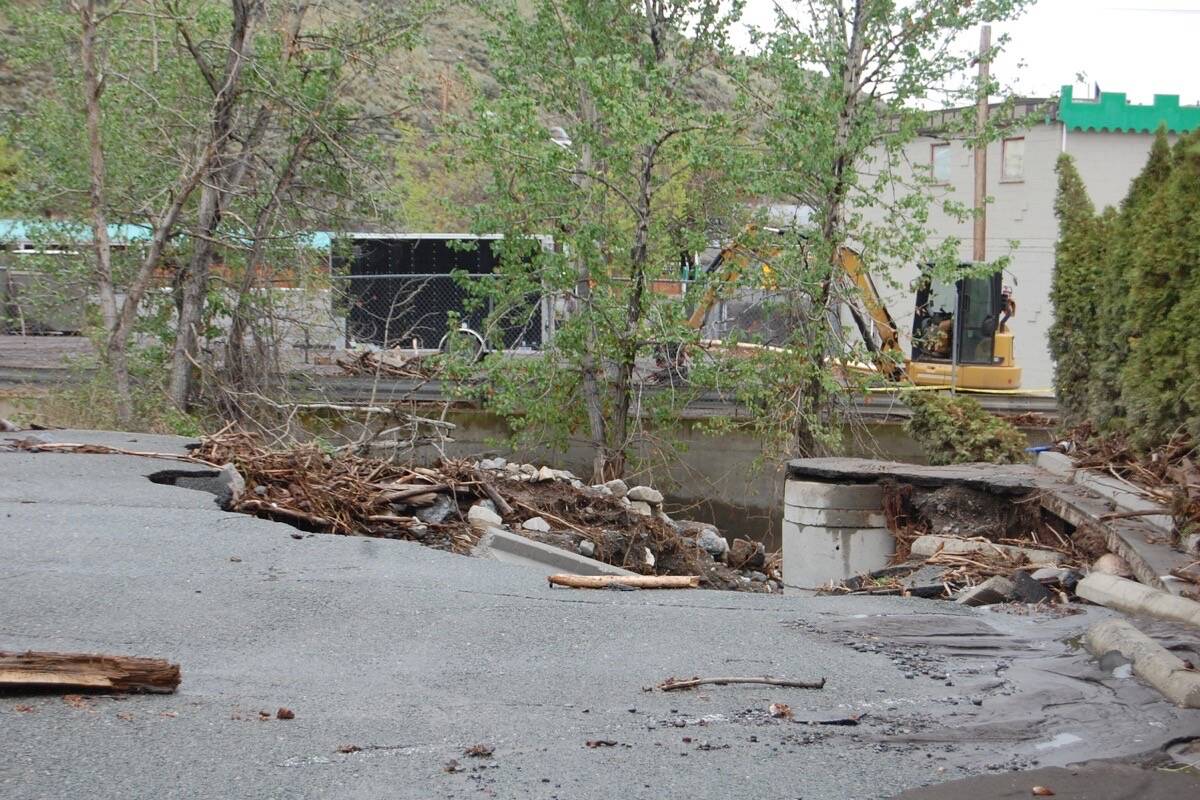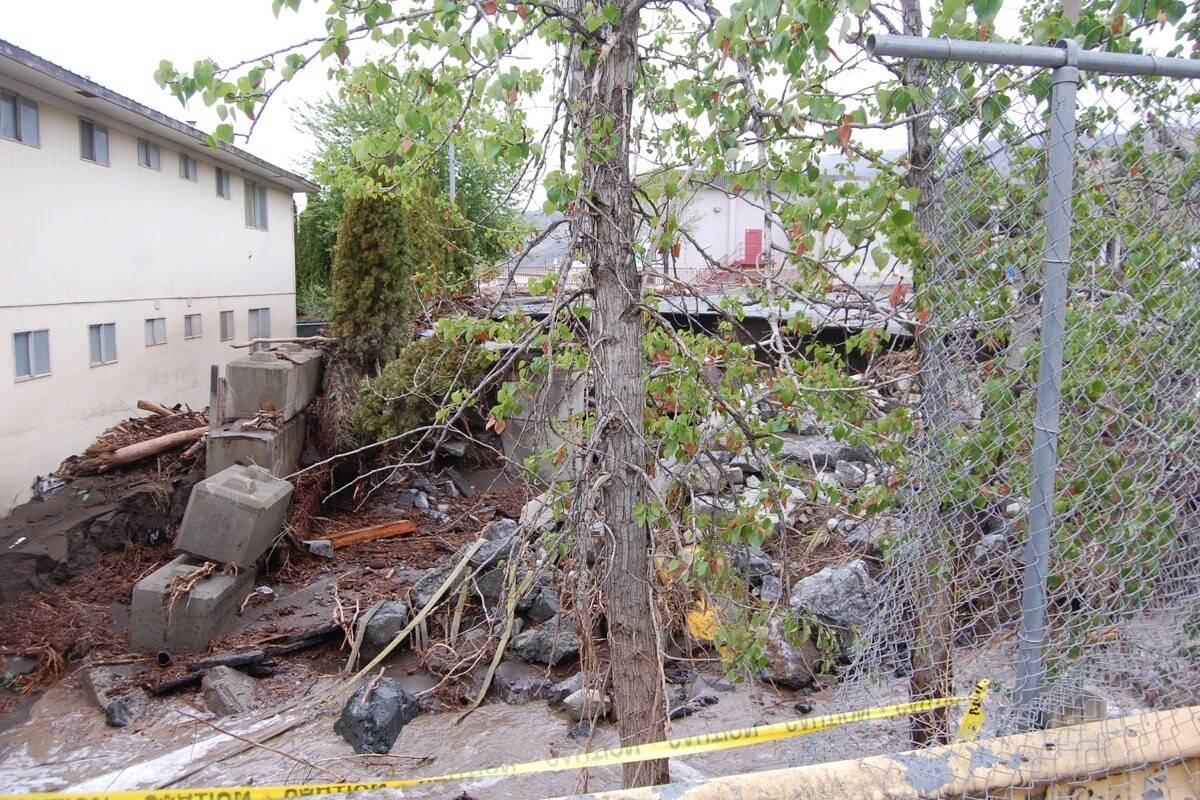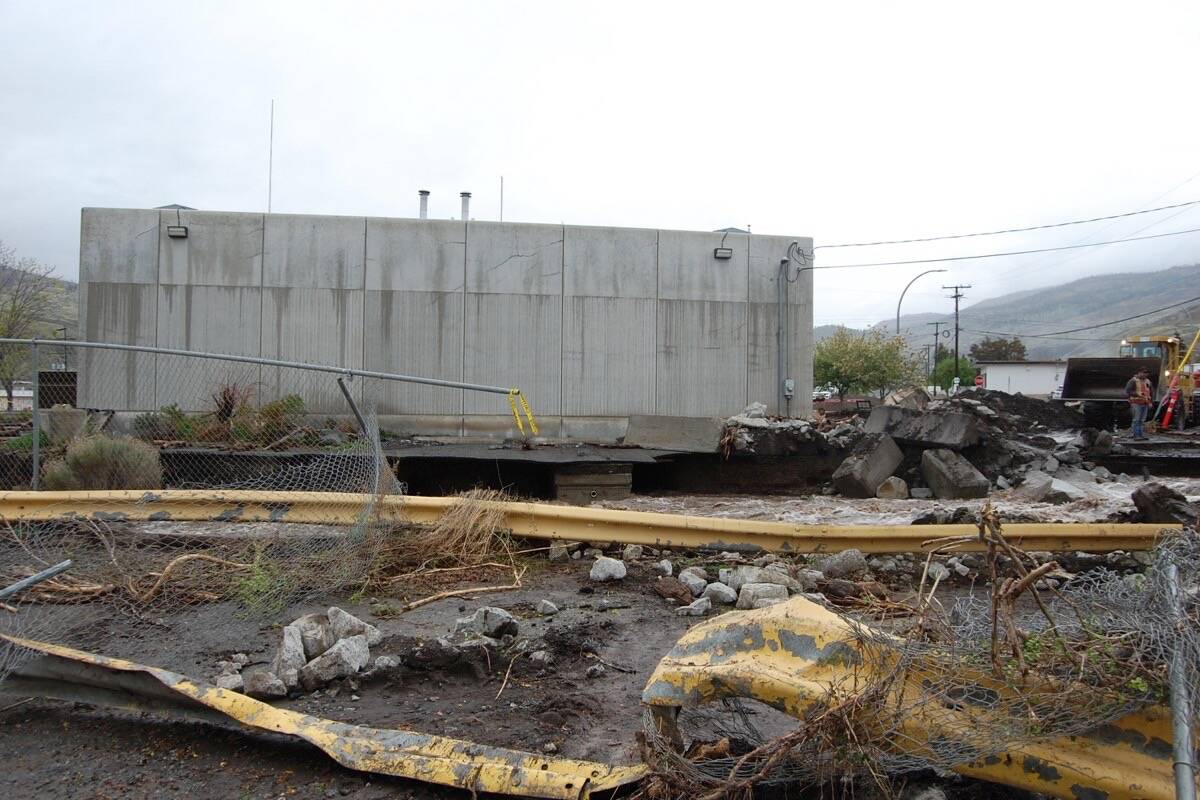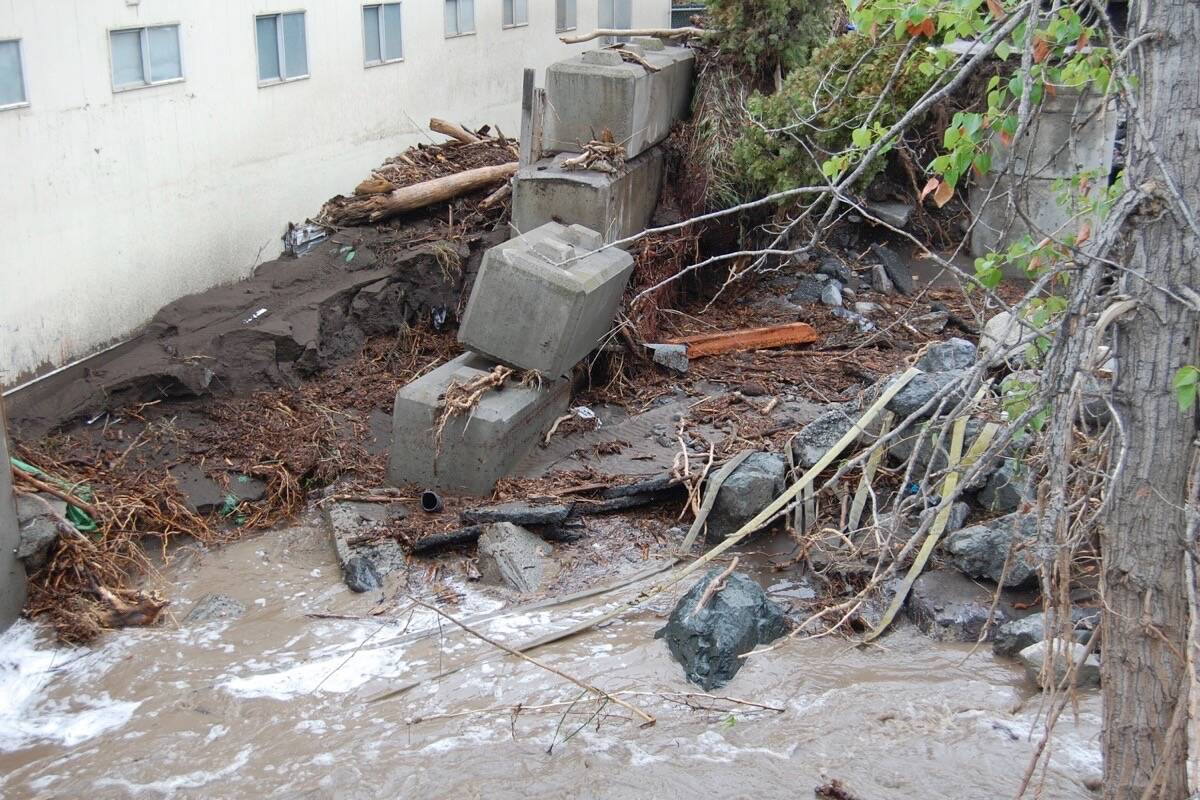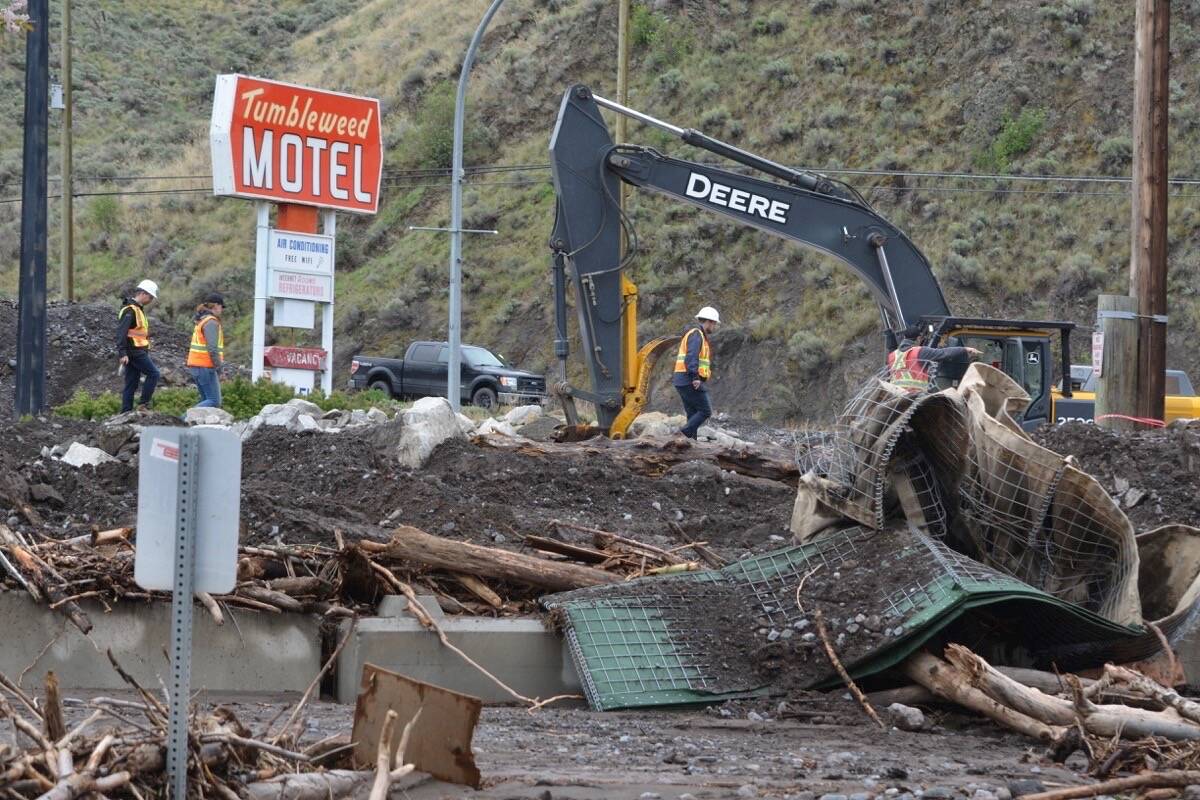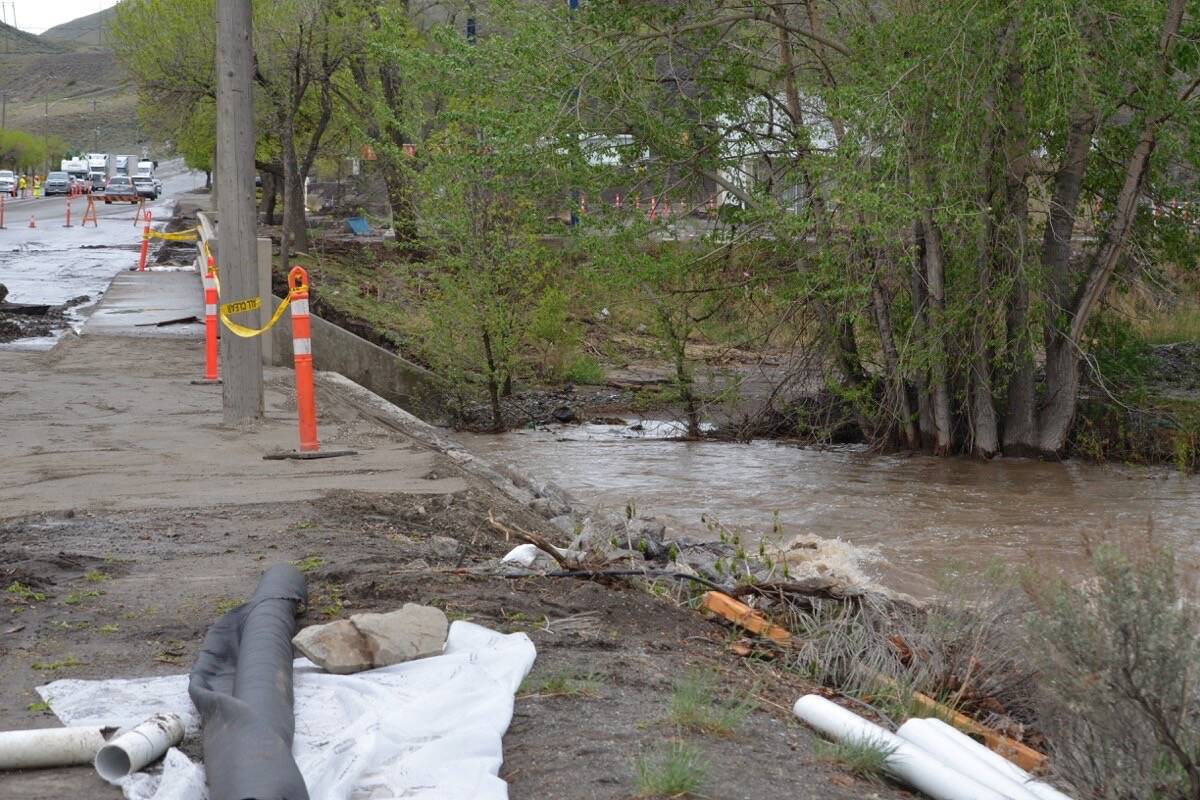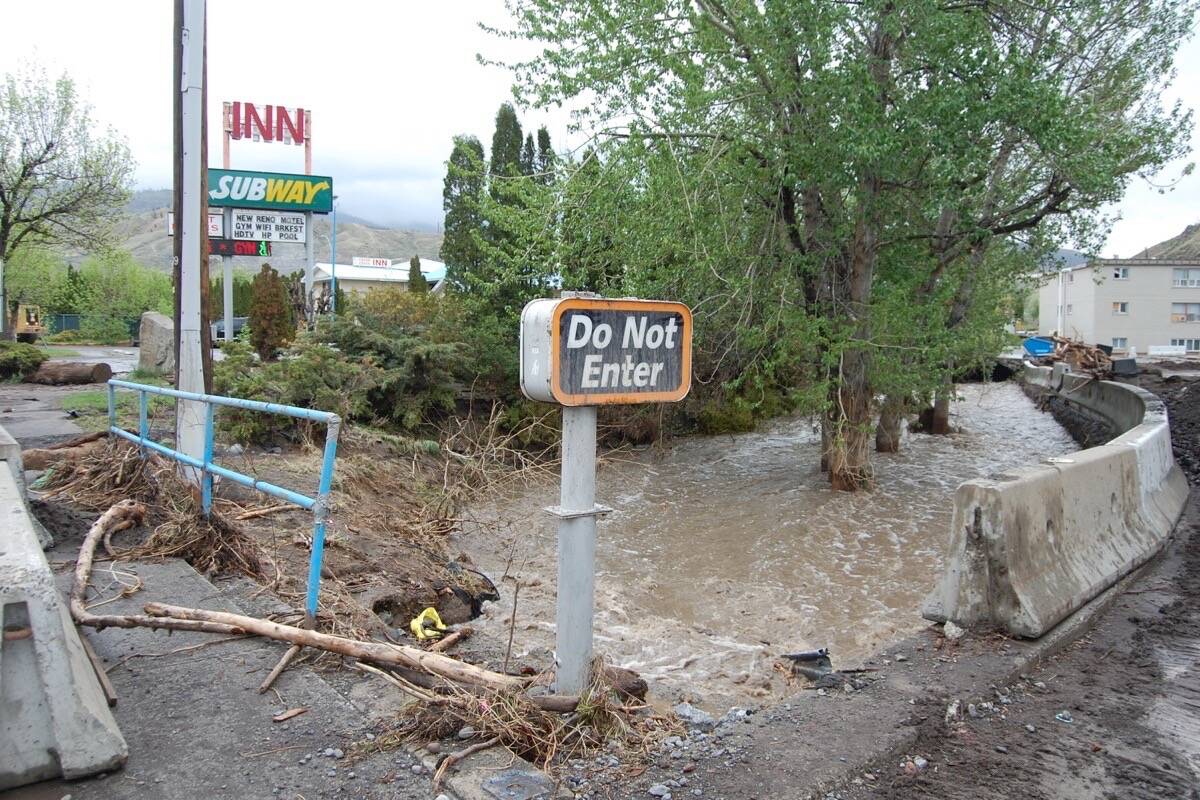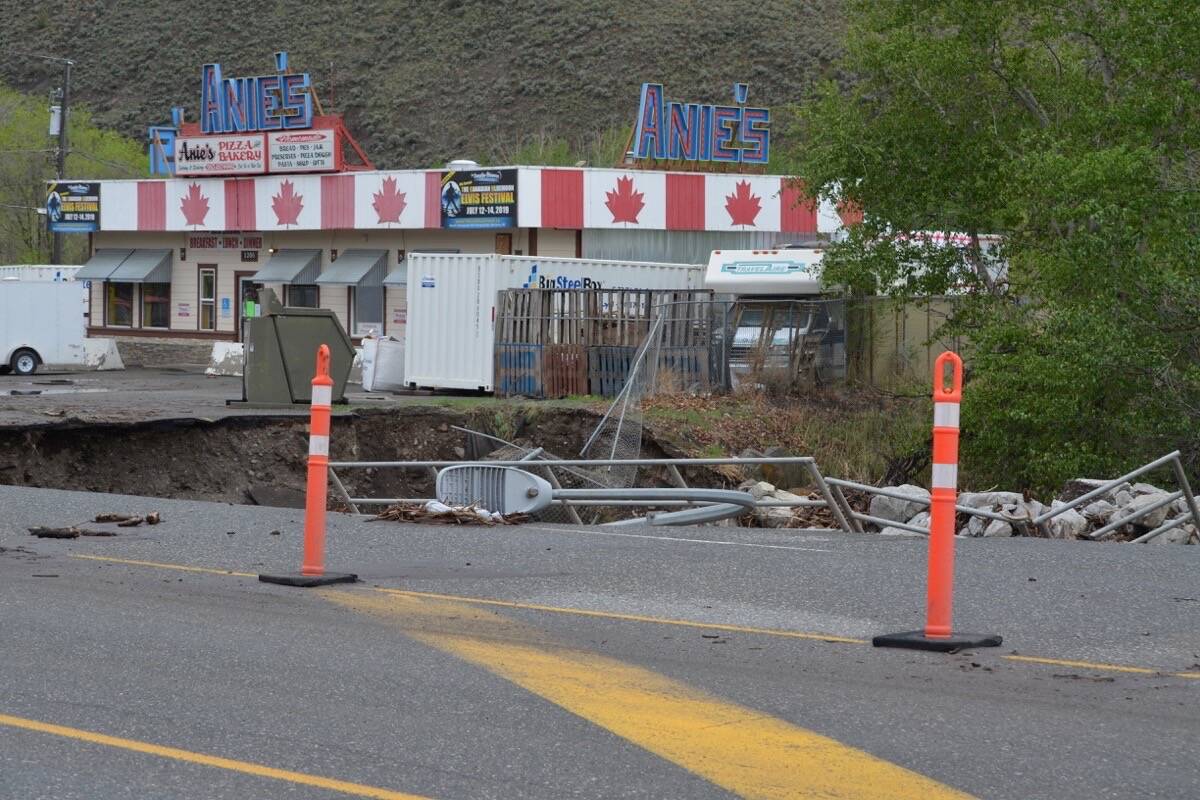As the Bonaparte River continues to rise, the Village of Cache Creek is bracing for more flooding, a week after floodwaters devastated the community, and has issued more evacuation orders.
Late in the afternoon of Tuesday, May 9 there were a total of 47 properties on evacuation alert and eight properties on evacuation order.
By 7 p.m. on May 9, the village confirmed that an additional 127 properties had been placed on evacuation order, including all units at the Sage and Sands Mobile Home Park on the Trans-Canada Highway. The order also includes properties on Old Cariboo Road, Nugget Road, and Collins Road.
Members of the RCMP and other agencies are assisting with the evacuation, noted the Village of Cache Creek. Evacuees are being told to register at the ESS reception centre located in Kamloops at McArthur Island Park.
The Bonaparte River is larger than Cache Creek, covers a much larger area, and is fed from an area further to the north, which had higher than normal levels of snow this past winter. While cooler weather has slowed the melt, Environment Canada is forecasting steadily rising temperatures over the next few days, with a daytime high of 34 C. expected on Sunday, May 14.
Clean-up from the flooding of Cache Creek is ongoing, and information officer Wendy Coomber says that the operators of most of the community’s businesses have been allowed back in to either re-open or start cleanup. She adds that an assessment of some properties that were on evacuation order has been done and the orders downgraded to alerts so that residents can return home.
Assessment of the village’s fire hall has started but will be ongoing. The hall is normally beside the creek, but when it flooded over the culvert at Quartz Road the building took the brunt of the torrent of water. The bay doors were opened to prevent them from buckling under the weight of water, mud, and debris, as they have done in the past, and for a time the torrent flowed through the hall. The parking lot behind the hall has been severely damaged, with a large section undermined and completely gone.
“We can’t allow people in the fire hall at this point, and I strongly believe it needs to be well checked by a structural engineer,” says Cache Creek CAO Damian Couture. “We’re working on that, as it impacts our ability to provide fire service. We could handle a fire call but we don’t have some equipment, so we’re severely limited in our capacity, which is nowhere near what it would be. Thank goodness Ashcroft is assisting us with mutual aid if necessary.”
Coomber says that the Ministry of Transportation will be assessing the extensive damage to Highway 1 and Highway 97. Both highways were shut down for 48 hours, reopening to single-lane, alternating traffic guided by pilot cars on the evening of May 4.
Highway 97 has suffered extensive damage, with at least two sections badly undermined and sidewalks and road surfaces washed away. Todd Road, which runs between Highway 97 and Old Cariboo Road, was also hard-hit; while the bridge across the Bonaparte appears sound, the road on either side has crumbled away, leaving the bridge impassable.
BC Wildfire Service personnel were in the community over the weekend, filling thousands of sandbags and placing them in low-lying areas along Old Cariboo Road, Collins Road, and Nugget Road. Couture says that the BCWS staff were phenomenal.
“Huge shout-out to them. We have 20-year floodplain mapping, so we looked at all the lowest-lying places in the community and BCWS sandbagged everywhere below that level. The path always changes a little, so there’s something different with every rising of the Bonaparte, but work been done to mitigate it.”
While the post office has reopened, Cache Creek Elementary School remained closed as of May 9, with the students being bussed to Desert Sands Community School in nearby Ashcroft.
The village would normally have gone to Stage 1 water restrictions on May 1, but has gone to Stage 4 restrictions instead, in order to reduce stress on the infrastructure at the water treatment plant. Residents can use water for cooking, hygiene, and emergency purposes only, but the water is safe to consume, and there is no need to boil it.
Couture says that even though the flooding threat is not over, discussion has already started about the clean-up, particularly of the tons of mud and debris that are everywhere. In some places the mud is less than an inch deep, while in other places it is more than a foot deep, and is still filled with water, creating a heavy, gelatinous mass.
“If it’s too wet it’s next to impossible to move, but when it dries it also becomes a problem, so it’s troublesome either way. When it has moisture in it, it has more weight, and we’re watching the loads because of putting stress on infrastructure.
“Because the Ministry of Transportation is allowing traffic through we believe things are okay, but we don’t even know where we’d put it, and we don’t know if it’s considered to be contaminated. That’s something we need to know so we can effectively get rid of it, so we’ll have to have that discussion with higher levels of government. We’re just getting out of the way right now, but it’s definitely going to be a sizable problem.”
He adds that another big part of the problem is not knowing if the flooding is finished: “We don’t want people to start doing certain activities while we’re still dealing with the issue.”
Couture acknowledges that some people whose properties are no longer at risk of flooding will be starting cleanup efforts, and says that people need to document everything for insurance and financial assistance purposes.
“Any cleanup you’re getting assistance with, document it. This has impacts down the line. If five people came out with shovels to help you dig out, write down the names of the people, the hours, dates, and times, what they did and for how long. Some deductibles can be offset with personal expenses.
“And take a lot of pictures. Pictures say a thousand words, and they can make a difference, help residents down the line when it comes to showing how you started, how you mitigated, how you ended up.”
While having the highways open has caused traffic snarls and waits of up to an hour to get through the community, Couture says that having them reopened is probably good for businesses, which have taken a hard hit. Many that were not directly affected by the flooding had to close because people were evacuated or employees could not get in to work.
“For the people relatively unaffected by this, supporting local businesses in any way we can will be crucial in upcoming weeks and months.”
Looking ahead, Couture says it is crucial that the village and the province are united in how they approach the response to this year’s flooding.
“We need to build resiliency into our systems, because it’s a benefit to everyone. Power lines that run through Cache Creek feed Ashcroft, and we have communication lines running through here that connect the province. It impacts the economy, people’s ability to travel, the ability to provide services.
“It can’t just be Cache Creek doing it, and looking forward I don’t think Cache Creek needs to fix this: we all need to fix this, as it hurts all of us. We’ve started having conversations with higher levels of government and internally, to try to get things going. You don’t have a disaster of this size and magnitude in a community this small and find yourself able to get back on your feet in a few days.”
editorial@accjournal.ca
Like us on Facebook and follow us on Twitter
BC FloodBreaking NewsCache Creek
